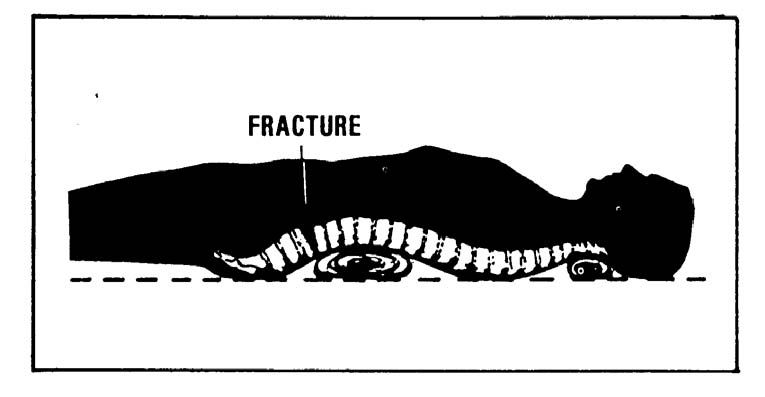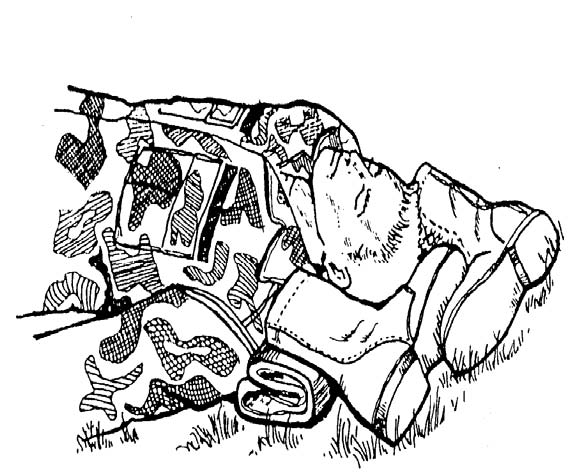Treating Fractures in the Field
Lesson 2: Spinal
Injuries
Section II: Immobilizing a Suspected Spinal Injury
2-10
2-10. IMMOBILIZING A CASUALTY'S SPINE USING THE GROUND AS SPLINT
If you suspect a casualty has a spinal injury, you can use the following steps to temporarily immobilize the casualty on the ground while you obtain a long spine board and assistance.
a. Tell the casualty to keep still.
b. If the casualty is lying on his back, place padding to help support and immobilize his spine (see figure 2-9).
Figure 2-9. Padding placed under the casualty's neck and back.
(1) Roll or fold padding (such as a blanket) until it conforms to the shape of the arch of his back. Then carefully slide the padding under the arch of his back.
(2) Slide a roll of cloth under the casualty's neck to help support and immobilize his neck.
c. Place padded rocks, small padded logs, or filled boots on each side of the casualty's head to keep it from moving. The procedure for using filled boots is described below.
CAUTION: Do not remove the casualty's boots if you are in a chemical
environment.
(1) Remove the casualty's boots.
(2) Fill the boots almost to the top with sand or small rocks.
(3) Place material (strip of clothing, sock, and so forth) on top of the sand or rocks in each boot to keep the sand or rocks from falling out.
(4) Tie the top of each boot to keep the material in place.
(5) Place the boots around the casualty's head so the head will not turn (see figure 2-10).
Figure 2-10. Casualty's head immobilized with boots.



